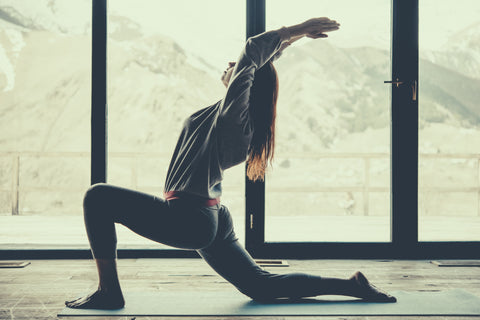The 5 Best Ways to Build Your Home Yoga Sequence
The 5 Best Ways to Build Your Home Yoga Sequence

The 5 Best Ways to Build Your Home Yoga Sequence
Creating a yoga sequence can seem intimidating if you're practicing at home without guidance. Learn the best ways to build up your yoga sequence here
36 million Americans practice yoga worldwide, meaning they take part in a regular yoga sequence each time they perform yoga. If you're getting into the yoga business as an instructor, you may think that developing a yoga sequence is easy, but it can be quite challenging.
And that's when we come in because we're going to help take the guesswork out of creating a yoga flow sequence. When you're finished reading this article, you're going to have all the information you need to develop calming and rewarding sequences for everyone that attends your classes.
Don't stop here, continue scrolling until you've read the article in its entirety and then get ready to grab your yoga mat.
1. Think About Your Timing
Whenever you hold a yoga class or have participated in a yoga session, one of the things that the instructor focuses on is timing. Your practice shouldn't be fast because it should focus on the fluidity and flexibility of your body moving as one.
As you continue to move through the practice, you'll notice that you also focus on the speed of your breathing, and it remaining steady throughout the session.
When you open your yoga sequence, it should focus on breathing and preparing your body for the practice ahead, thanking it for the work that it's about to do.
Then you'll move into the part of the practice where you're moving through various poses and stretches continuing to focus on your breathing techniques. In the bulk part of your practice, you'll increase the level of difficulty with each pose reaching your peak pose.
After you've reached your peak pose, you'll focus on remaining at this peak level until you're ready for the wind-down. As you're moving into the wind-down section of your practice, focus on movements that take you to the floor, and to end your practice take a couple of minutes to stretch your limbs and again thank your body for the practice that it participated in that day.
Your timing can be controlled by the flow that you use to move through the sequence. Your flow should always be natural and rhythmic no matter what you're doing.
2. Focus of the Sequence
Another aspect you're going to want to think about when creating a yoga sequence builder is the focus of your sequence. Do you want to focus on hip flexibility? Are you looking to open the spine and relieve back pain?
When you know what the focus of your sequence is going to be, it can help you select poses that will help support your sequence's focus. Not knowing what you want your sequence to focus on can leave the practice chaotic and scattered.
And when things aren't focused, it can have a detrimental effect on the calming effect that yoga is supposed to have on those practicing it.
3. Select Your Poses
Now that you know what your sequence's focus is going to be, you can move on to selecting the poses that you're going to use throughout the practice. For example, if your sequence focuses on abundance, the poses that you'll select will focus on opening the heart to the universe.
Or, if you're looking to focus on stretching the spine, all of your poses will focus on opening and lengthening the spine gently. None of the poses that you perform during your yoga flow sequence should be sped through because it can cause injury to you and your students.
Move your students through poses from each category, including standing and seated, backbends, and more. Including poses from each category will help stretch various muscles and target your area of focus in a variety of ways that you and your students are going to be thankful for as you all continue to work through each practice session.
4. Be Safe
Just like with working out, you're going to want to remain safe at all times. To ensure that you and your students are always safe, you'll want to ensure that everyone is correctly warmed up and that when the practice ends, you cooldown correctly.
When you don't take the time to warm the body up before beginning your yoga practice, it can be harsh on the body and can cause injury. Remember, yoga is meant to focus on therapeutic healing. And part of restorative healing yoga is to always warm-up and cooldown when completing any forms of exercise.
5. Practice Your Sequence
After you've gotten all the details of your practice, you need to practice the sequence. When you practice your sequence, you'll have a better feel for how it's supposed to go.
You'll then have the time you need before your next class to tweak the sequence where it needs to be tweaked. You're going to want to make the necessary changes to improve maximum flow and relaxation in all the sequence areas.
Yoga Sequence Building 101
When you're creating a yoga sequence, you need to focus on each aspect. Starting from the focus of the sequence to the poses that you're going to use throughout the sequence. Taking your time to think about each area will help you create a sequence that makes sense.
Before you can begin your practice, you're going to want to have your yoga mat ready for optimal practice flow. When you shop My Sweat Space, you've got the opportunity to customize your yoga mat, and if you have any questions, feel free to contact us.
We're here to help you achieve your yoga sequence goals one mat at a time.
